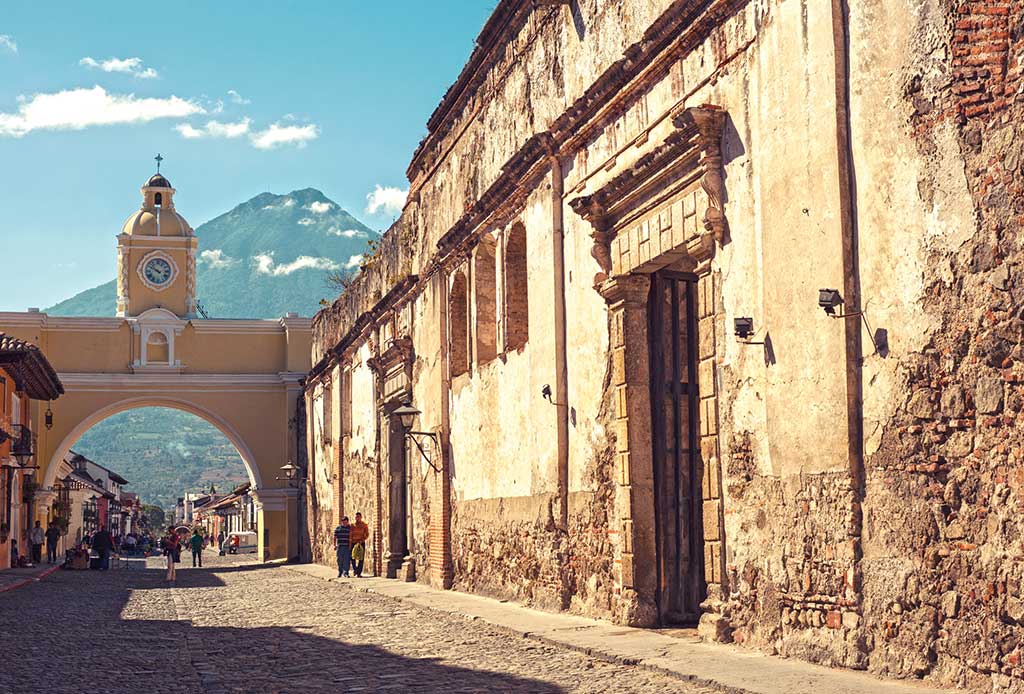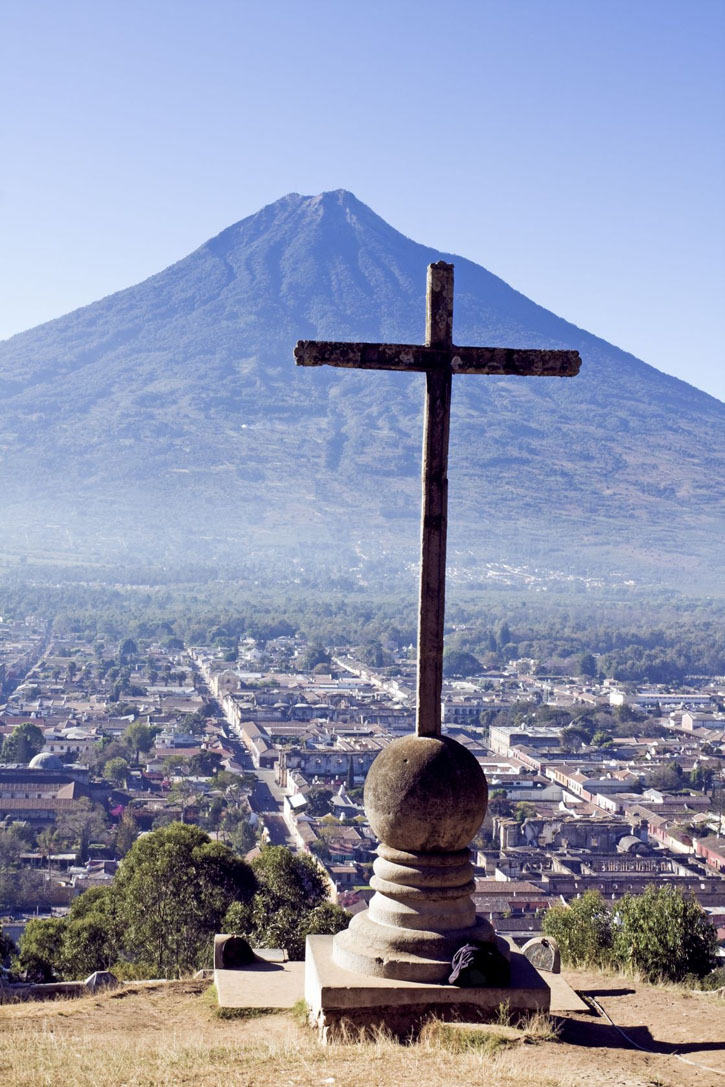Antigua is fascinating and easily manageable, as most everything you might want to see and do lies within a radius of a few miles.

Arco de Santa Catalina. Photo © Al Argueta.
In the hills north of the city stands this giant stone cross, from which there are sweeping views south over the city with Agua Volcano in the background. Robberies were once frequent here until the creation of the tourism police, which began escorting visitors to the site and pretty much put an end to these crimes. It’s still a good idea to go along with a police escort and to visit during daylight hours. Escorts are available free from the tourism police near the central plaza. You’ll want to bring along your camera and some water. It’s about a 30-minute walk from the plaza to the Cerro de la Cruz. From the top of the hill, you can see the entire Antigua Valley and the cross makes for a nice foreground element.

Agua Volcano watches over Antigua, Guatemala’s old colonial capital. Photo © Henryk Sadura/123rf.
The Iglesia y Convento de las Capuchinas (2a Avenida Norte and 2a Calle Oriente, 9am-5pm daily, $4) was abandoned after being destroyed in the earthquakes of 1773. Restoration began in 1943 and is still being carried out today; the convent now also serves as a museum. The convent’s foundation dates to 1726, making it the city’s fourth, and is the work of renowned Antigua architect Diego de Porres. There are beautiful fountains and courtyards flanked by sturdy stone pillars with stately arches and flowering bougainvillea. It is certainly the most elegant of Antigua’s convents and well worth a look for those with even a casual interest in colonial Latin American architecture. The convent was the haunt of the Capuchin nuns from Madrid, a rather strict order limiting its numbers to 28 and requiring the nuns to sleep on wooden beds with straw pillows and sever all ties to the outside world.
The church consists of a single nave lacking side aisles. There are two choir areas, one adjacent to the altar on the ground floor and another on the second floor at the end of the nave.
After the 1773 earthquakes and the subsequent transfer of the Guatemalan capital to its new location, many of the convent’s historical artifacts were likewise transferred to their new home in the San Miguel de Capuchinas convent in modern-day Guatemala City.
Excerpted from the Fifth Edition of Moon Guatemala.